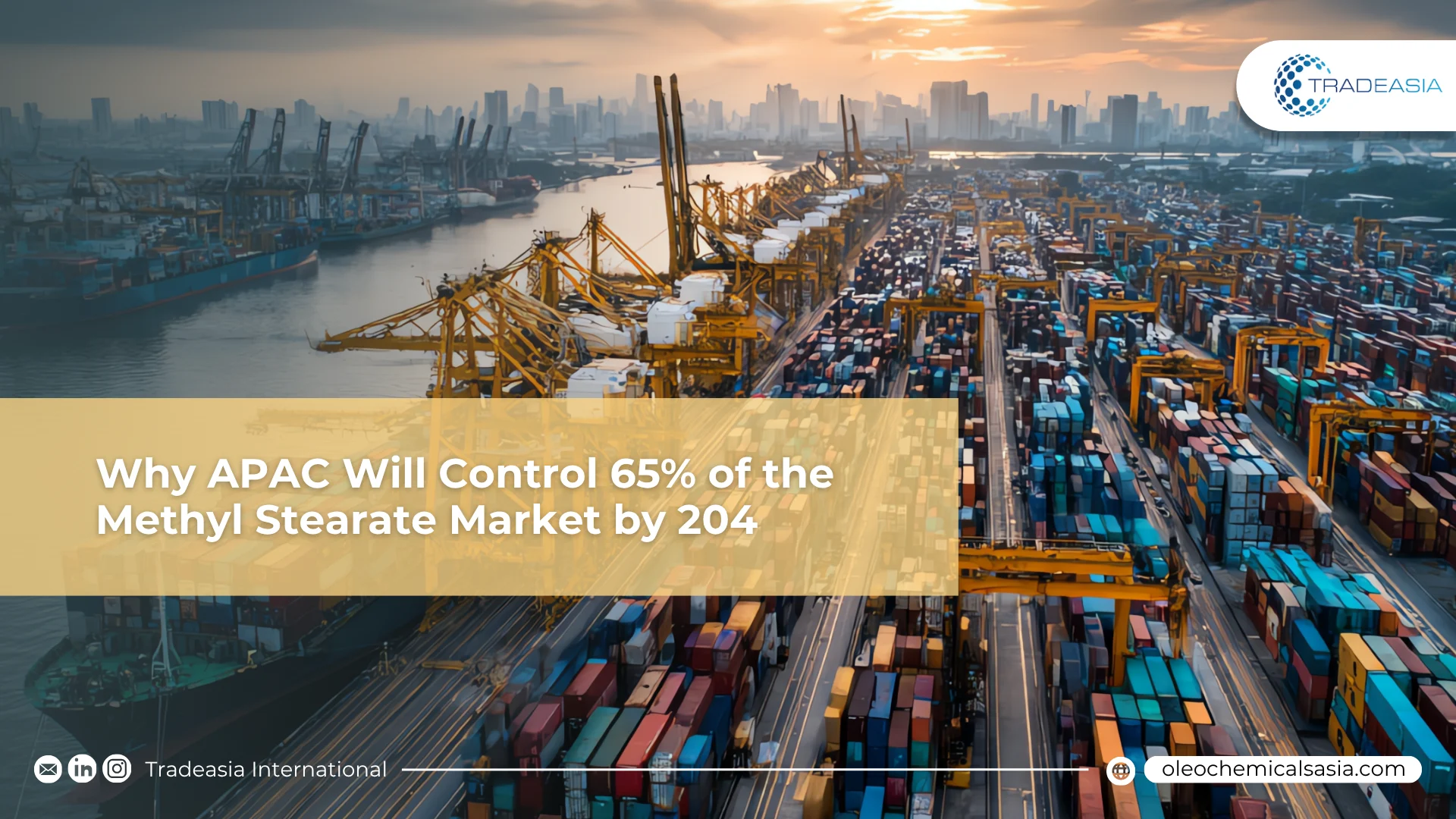The Great Shift: Why APAC Will Control 65% of the Methyl Stearate Market by 2040

Table of Content
-
The New Center of Gravity: 2023 vs. 2040
-
A Two-Speed World: APAC’s Rise vs. Europe’s Stagnation
The most profound change coming to the Methyl Stearate market isn't a new technology or application; it's a massive geographical realignment. The historical model of shipping raw Asian feedstock to Western processors is collapsing. By 2040, the Asia-Pacific (APAC) region will unequivocally dominate not only production but also consumption.
For global procurement teams, this regional fragmentation presents an immense logistical and pricing challenge. This is where a partner with a strong foothold in the epicenter of production becomes indispensable. Tradeasia International, with its robust network anchored in the heart of Asia's palm industry, is built to navigate this new world, translating complex regional dynamics into streamlined, reliable supply for our clients.
The New Center of Gravity: 2023 vs. 2040
The data clearly illustrates this tectonic shift. In 2023, the market was relatively balanced: APAC held 48% of global consumption, with Europe at 26% and North America at 19%. Now, flash forward to our 2040 projections. APAC is forecast to account for a staggering 65% of all global consumption. This isn't just incremental growth; it's a fundamental consolidation of demand. This shift means that inter-Asia trade flows will become far more critical than the traditional Asia-to-Europe shipping lanes.
A Two-Speed World: APAC’s Rise vs. Europe’s Stagnation
This "Great Shift" is a two-sided coin. First, APAC's rise is fueled by its control of the raw material. As Palm-Chemicals.com data shows, Indonesia and Malaysia control over 85% of the global palm oil feedstock and are investing billions in downstream oleochemical fractionation. This is expected to add 3.5 million metric tons of new ester capacity by 2035, primarily to meet surging domestic demand. On the flip side, Europe faces stagnation. Its market share is expected to contract to just 16%. The primary cause is regulatory pressure; the EU Deforestation Regulation (EUDR) is already projected to add $12 to $20 per metric ton in compliance costs by 2027. This high-cost environment is choking growth, leading to a projected 0.8% CAGR for the 2030-2040 period.
Sources:
-
Global Production Capacity and Export Data.
-
APAC Oleochemicals Regional Report 2024-2040.
-
European Commission (2023). EUDR Impact Assessment Database and Trade Reports.

Leave a Comment